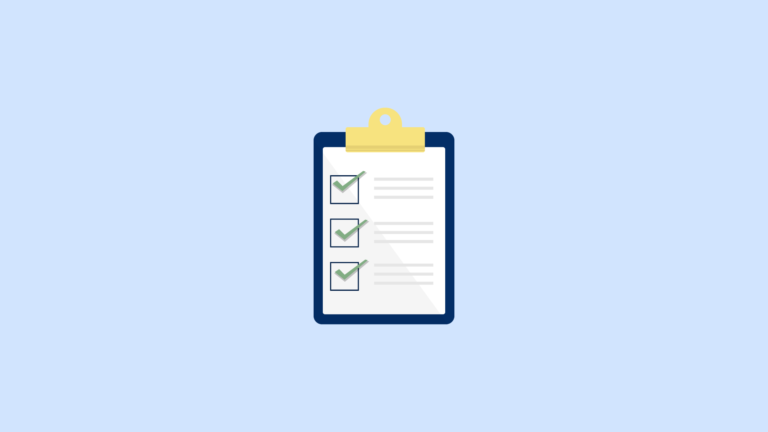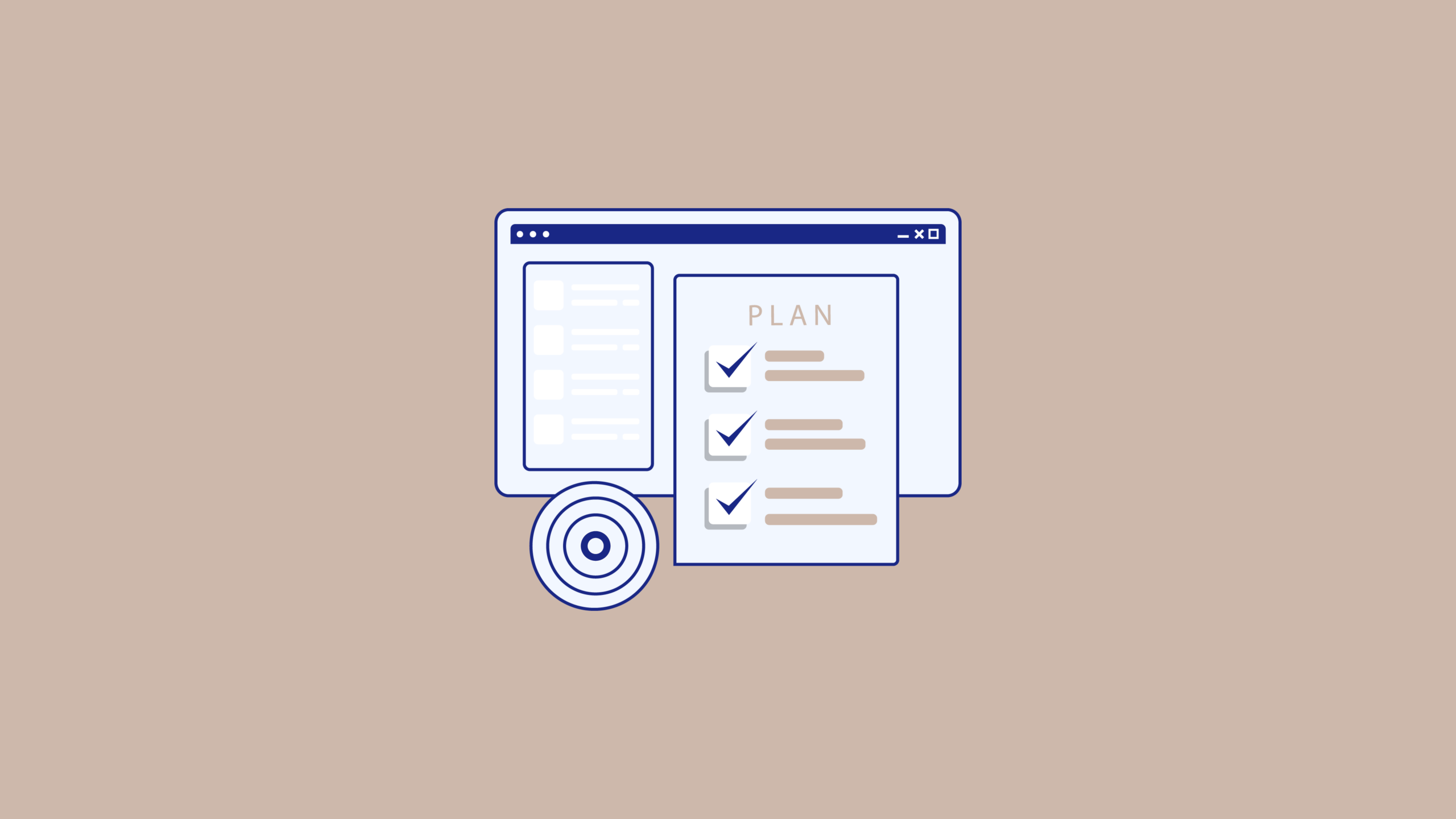In an office environment, you’d generally handle numerous projects and tasks, simultaneously. The conference your team is gearing up for, for example. You’d need the slides for the keynote, reading material, and swag for the giveaways, pre-event blogging, social banners, and more.
That’s how, with a bit of planning ahead of time (and in advance), you can assist with project planning here during the planning phase. Project management requires a little forward-thinking and proactive execution. Once you map it out, you can better keep track of your goals and priorities as you look to finish any specific project.
You also wouldn’t want to miss an event happening in your area, right? Well, it’s the same thing when you’re handling a project. You need to take care of a thousand things, online and offline at the same time. And don’t forget to keep in mind the target audience, the deadline, and the client’s briefs.
What is a Project Management Checklist?
Definition and Purpose
A project management checklist is a comprehensive tool used by project managers to ensure that all necessary tasks are completed in a timely and efficient manner. It serves as a detailed list of steps that helps project managers stay organized, focused, and on track to achieve project goals.
The primary purpose of a project management checklist is to provide a clear plan and guidelines for project execution, ensuring that all stakeholders are aware of their roles and responsibilities.
By using a project management checklist, project managers can systematically address each aspect of the project, from initial planning to final execution, thereby enhancing the likelihood of project success.
Benefits of a Project Management Checklist Template
A project management checklist is a list of tasks that need to be completed and action items that need to be taken in order to achieve the desired result or outcome of a project. A project management checklist is vital for you, your team, and your stakeholders.
A project management checklist includes essential components such as risk assessment, planning and scheduling tasks, and budgeting and resource allocation.
Here are the benefits of developing a project management checklist:
It can help you manage all aspects of the project and ensure nothing is forgotten
Also, It can help you get organized before implementing any strategies
It can help you determine how long it will take to complete the project
It can help you identify potential problems
Project management checklists are key to your success as a project manager. This list will allow you to control every stage of your project from start to finish. We have compiled a list of common tasks that are involved in most projects.
Project management is a complex task that always needs to be done with extreme care and dedication. A project manager is the leader of a team.
He or she is in charge of making sure that everything runs smoothly from the beginning of the project to its conclusion. Through the years, project management has become a key element in any company that wants to succeed.
Anyone can follow this guide to find out how to manage a project correctly.
1. Start with the Vision
This is probably one of the most important steps in the process. If you don’t have a clear idea about what you want to do, how will your team know? This step involves defining your goals and objectives, identifying the scope, and coming up with strategies that will help you achieve those goals.
You need to start by figuring out what the vision is for the project. Otherwise, it will be impossible for you or your team to determine when it’s done and whether or not it was successful. If you don’t already have a vision statement, gather all key stakeholders and come up with one in this first step of your project management checklist.
2. Identify and Plan for the Available Resources
Your resources are key when it comes to managing a project successfully. Resources are everything that you need for your project, including people, money, and technology.
You’ll need as many details as possible so you can identify which ones are available and which ones aren’t. Always keep in mind that planning is essential in this step because it allows you to make an estimate about your budget, including direct costs such as labor, materials, and equipment, and time frame, among other things.
3. Identify the Project Scope
Now that the vision is established, define the scope of the project. This will help with determining which tasks are necessary and which can be cut from the plan if timelines or budgets are starting to get tight.
It will also help keep your team focused on the big picture and not get distracted by shiny new things that can derail a project quickly.
4. Set up a Communication Plan
Because you’re going to be working with people from different departments and levels, it’s important to implement a communication plan.
This means that you need to identify who your project stakeholders are (e.g. your colleagues, the client, etc.). And set up clear lines of communication with them so that they can ask questions and get updates on the project.
It’s important to establish a regular schedule for meetings, phone calls, and status reports to ensure that everyone is on the same page and that important decisions are being made at the right time.
Distributing agendas before each meeting can help keep things on track, while minutes afterward can help ensure nothing falls through the cracks. You should also set up a system for reporting unexpected issues or delays so you can react quickly and get back on track as soon as possible.
5. Identify the Stakeholders
The next step is to identify who the key stakeholders are in your project. This will help you understand who you should be communicating with throughout the project, and if there are any other people that need to be involved with specific stages of the project.
Who will be affected by this project, and how? How much input do they need to have at every stage of its completion? Are there any stakeholders whose approval will be necessary before the project can move forward?
Make sure that you understand what all of these people need and expect from the project so you can make sure that those expectations are met.
6. Work on a Project Plan.
Determine what your project is going to be and what you need to do to complete it by creating a comprehensive project management plan. Make sure that your product has a clear objective, so you can keep track of what needs to be done. It’s okay to change the product while you’re working, but make sure that each change gets documented and approved.
A project plan is essential to communicating what you’re doing and how you’re doing it. It doesn’t have to be complicated. Just write down what you’re going to do, why, by when, and how much it will cost.
7. Create a Work Breakdown Structure.
A Work Breakdown Structure is a hierarchy of tasks that need to get done for the project. Start with the big picture and work your way down, breaking larger tasks into smaller ones until they can be accomplished without any further breakdowns.
Using a project management checklist template can simplify this process by providing a structured format to follow.
This structure will help you determine how long it will take to complete the project and how much it will cost, as well as help you plan out who will do which tasks. If this is your first time creating a WBS, here are some templates that can help.
It is essentially breaking down your project into smaller tasks that can be delegated and tracked. This is where you create the detailed schedule for your project, and where you’ll allocate resources (people or other things) to each task.
8. Work on the Budget.
The project budget will help you determine whether or not you have enough money for the project, as well as provide a guideline for spending money on supplies and resources. Make sure to include any potential costs (such as unforeseen expenses) in the budget so that you don’t end up in debt at the end of your project.
Your project budget should be part of your overall plan, but it’s worth giving attention to on its own. If you don’t know your numbers, you can’t really say for sure whether your project will succeed or not.
Most business software makes this easy. All you need to do is estimate how many hours each task will take, multiply by the resource rates (how much people cost) involved, then add in any one-time costs like equipment.
9. Prepare a Risk Management Strategy
The first step in risk management throughout the project’s lifecycle is to identify all potential risks associated with your project. The next step is to evaluate and prioritize them, and then decide how to manage or mitigate each risk should it occur. Don’t get bogged down in hypotheticals — focus on what you can do about the most likely risks you face.
It’s impossible to eliminate risk entirely, but you can minimize it by identifying and planning how you will respond to potential problems before they arise.
To do this, you should:
Conduct a risk assessment — identify all potential risks and rate them based on their likelihood and impact if they occur.
Create or adapt an existing contingency plan that explicitly outlines how each risk will be managed if it occurs. This should include who is responsible for taking action and what steps are required.
In an office, you’d be able to delegate these things to your team, who would get it all done. In an independent setting, you’ll have to do it yourself. If you are working in a team, then there are templates that can help facilitate your work.
The first thing you should do is assess your needs and find the right tools for helping you achieve what you set out to accomplish.
Creating a Project Management Checklist
How to Make a Project Checklist
Creating a project management checklist involves several crucial steps to ensure that all aspects of the project are covered:
Define Project Goals and Objectives: Start by clearly outlining the project’s purpose, scope, and deliverables. This will provide a solid foundation for the entire project and help keep the team focused on the end goals.
Identify Stakeholders: Determine who will be involved in the project and their roles and responsibilities. Understanding who the key players are will facilitate better communication and collaboration throughout the project’s lifecycle.
Determine Project Scope: Outline the specific tasks and activities required to complete the project. This will help in setting realistic expectations and avoiding scope creep as the project progresses.
Establish a Project Timeline: Create a schedule with deadlines and milestones. A well-defined timeline will help in tracking project progress and ensuring that all tasks are completed on time.
Allocate Resources: Identify the necessary resources, including human resources, equipment, and materials. Proper resource allocation is essential for efficient task execution and project success.
Develop a Budget: Establish a budget that includes both direct and indirect costs. A detailed budget will help in managing financial resources effectively and avoiding cost overruns.
Identify Potential Risks: Determine potential risks and develop a mitigation plan. Being proactive about risk management can prevent potential issues from derailing the project.
Create a Communication Plan: Establish a plan for communicating with stakeholders and team members. Clear communication is vital for ensuring that everyone is on the same page and that any issues are addressed promptly.
By following these steps, project managers can create a comprehensive project management checklist that will guide them through the entire project, ensuring that all tasks are completed efficiently and effectively.
Project Closure and Evaluation
Project Closeout Checklist
A project closeout checklist is a critical component of the project management process. It ensures that all necessary tasks are completed, and the project is formally closed. The project closeout checklist includes the following steps:
Finalize Project Documentation: Ensure that all project documents are complete and up-to-date. This includes contracts, reports, and any other relevant documentation.
Conduct a Post-Project Review: Evaluate the project’s success and identify areas for improvement. This review should involve all key stakeholders and provide valuable insights for future projects.
Obtain Final Acceptance: Obtain formal acceptance from the project sponsor or customer. This step confirms that the project has met all its objectives and deliverables.
Release Resources: Release all project resources, including team members and equipment. This allows resources to be reallocated to other projects or tasks.
Evaluate Project Success: Evaluate the project’s success based on its goals and objectives. This evaluation should consider factors such as budget adherence, timeline compliance, and overall project quality.
Document Lessons Learned: Document lessons learned and best practices for future projects. This information can be invaluable for improving processes and avoiding similar issues in future projects.
Archive Project Files: Archive all project files and documents for future reference. Proper archiving ensures that important information is preserved and can be accessed if needed.
By following these steps, project managers can ensure that their projects are completed successfully and that all necessary tasks are completed in a timely and efficient manner. This thorough approach to project closure and evaluation helps in capturing valuable insights and setting the stage for future project success.
Get the Best Out of Your Project Success
As a result, the best strategy is to make use of a project management checklist to ensure successful project completion. A good checklist can help ensure that everything you need for each project is taken care of. This can help ensure that you and your team are getting everything done on time and within budget.
What’s more, having a comprehensive list of everything that needs to be done can help with motivation. For example, when tasks stack up and you don’t want to finish your current project before beginning a new one, it can be easy to simply look at the next item on the list and say “at least I’m almost done with this one!”
You don’t have to be a seasoned project manager to be a valuable resource that your employees can look to. In fact, the more you learn about project management and keep your resources up-to-date on current trends, the more effective you can be at identifying where time is spent inefficiently and timing is disrupted.
Your department will run more smoothly, your deadlines will get met, and your projects will look better. If only because you were able to let your team do what they know how to do best.
Frequently Asked Questions (FAQ) about Project Management Checklists
What is a project management checklist?
A project management checklist is a structured list of tasks and action items that help project managers ensure all necessary steps are completed for a project’s success. It serves as a guide to keep the project organized and on track.
Why is a project management checklist important?
A project management checklist is crucial because it helps manage all aspects of a project, ensuring nothing is overlooked. It aids in organizing tasks, identifying potential problems, and keeping the project on schedule and within budget.
How do I create a project management checklist?
To create a project management checklist, start by defining project goals and objectives, identifying stakeholders, determining the project scope, establishing a timeline, allocating resources, developing a budget, identifying potential risks, and creating a communication plan.
What should be included in a project management checklist?
A project management checklist should include tasks related to defining goals, planning resources, outlining the project scope, setting timelines, managing budgets, assessing risks, and establishing communication plans.
Can I use a project management checklist template?
Yes, using a project management checklist template can simplify the process by providing a structured format to follow. It can help ensure all critical elements are covered and streamline the planning process.
How does a project management checklist help in risk management?
A project management checklist helps in risk management by identifying potential risks early in the planning phase. It allows project managers to develop mitigation strategies and contingency plans to address these risks, minimizing their impact on the project’s success.
What are the benefits of using project management software with checklists?
Project management software with checklists can enhance efficiency by automating task tracking, providing real-time updates, and facilitating collaboration among team members. It also helps in managing resources, timelines, and budgets more effectively.
By addressing these common questions, project managers can better understand the role and benefits of using project management checklists, ultimately leading to more successful project completion.







